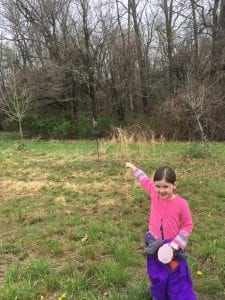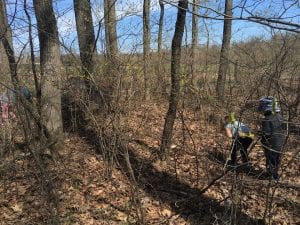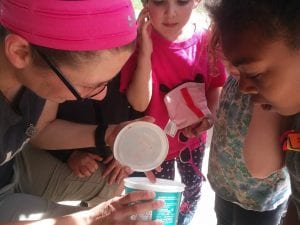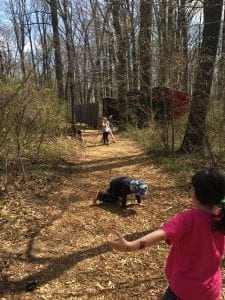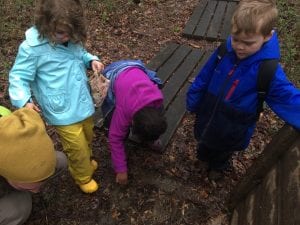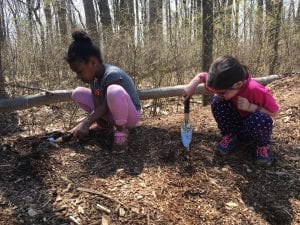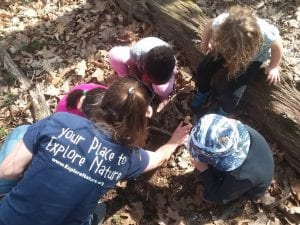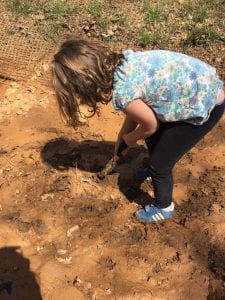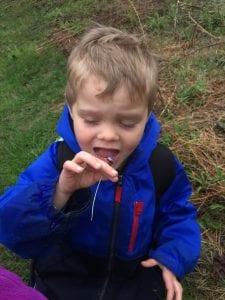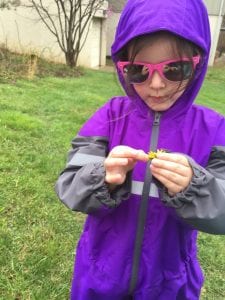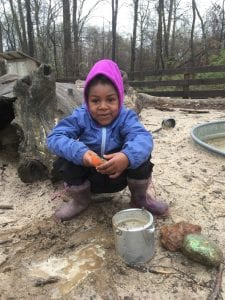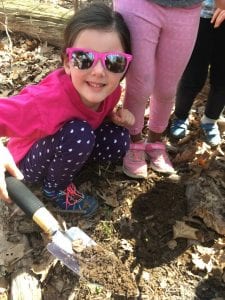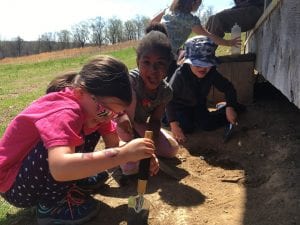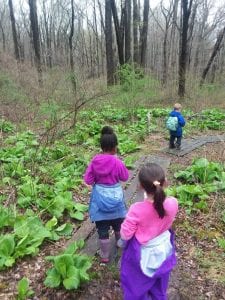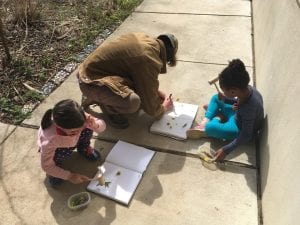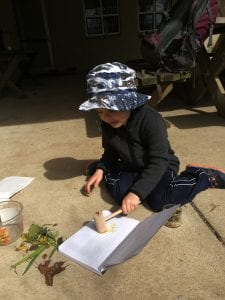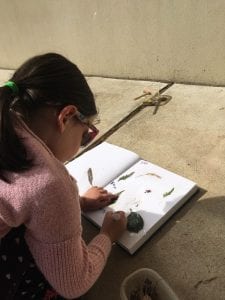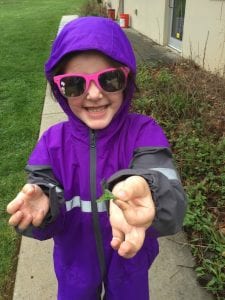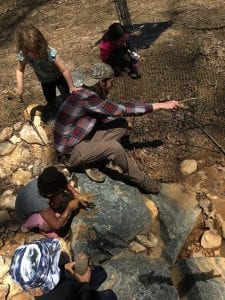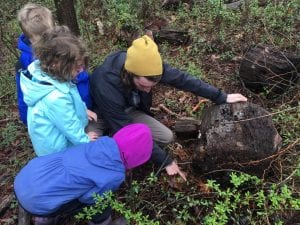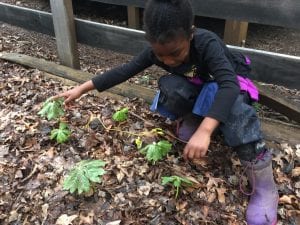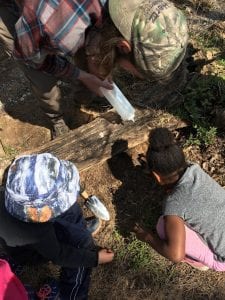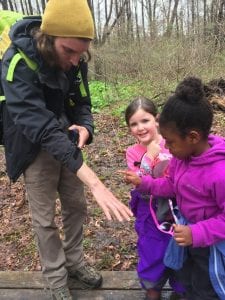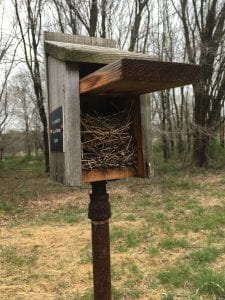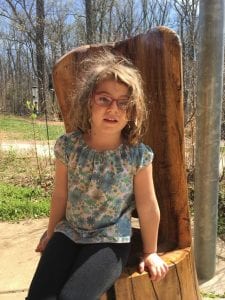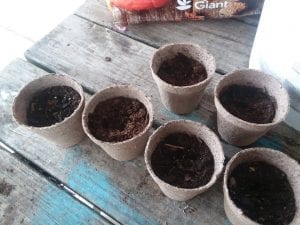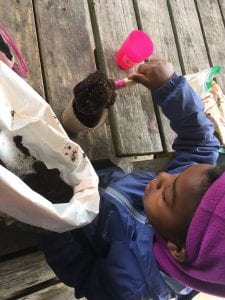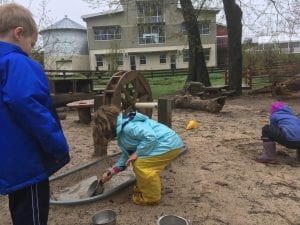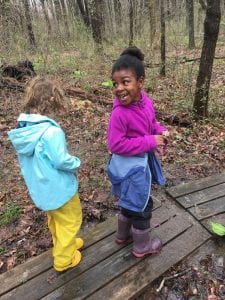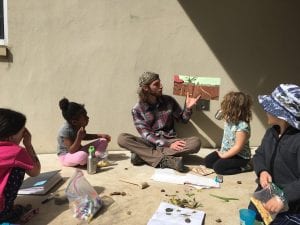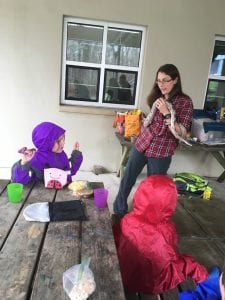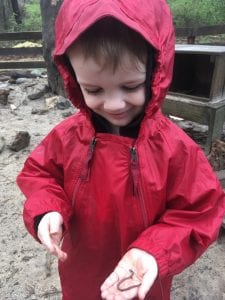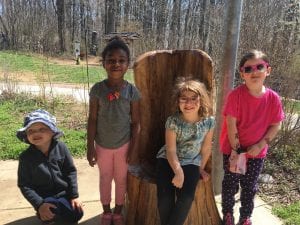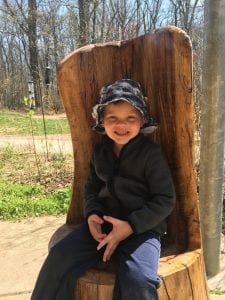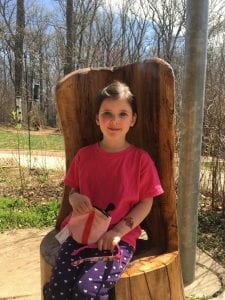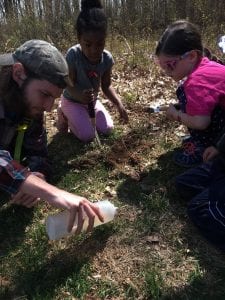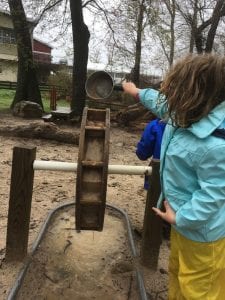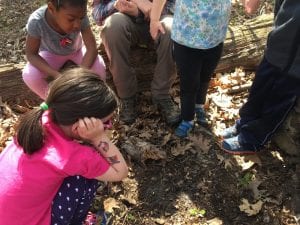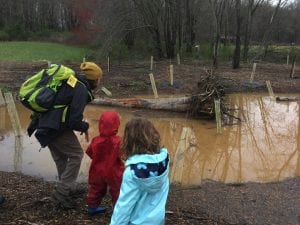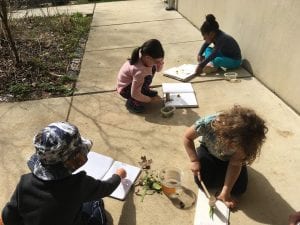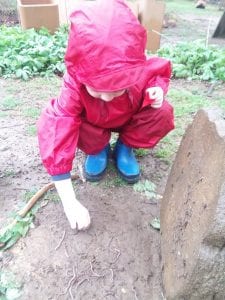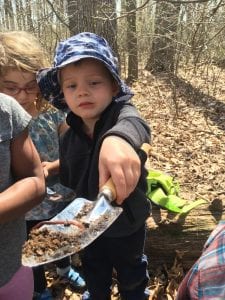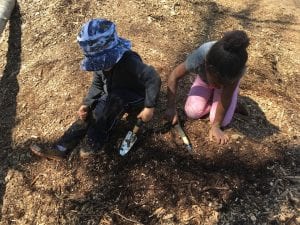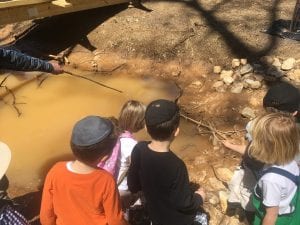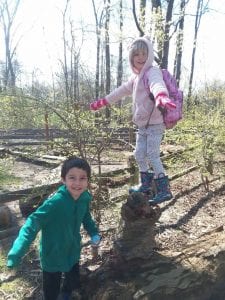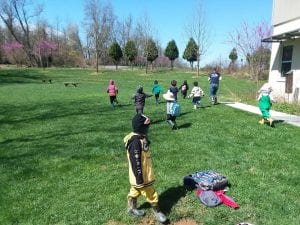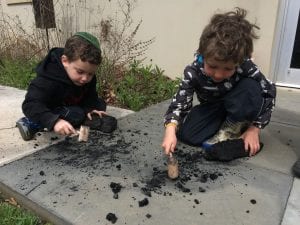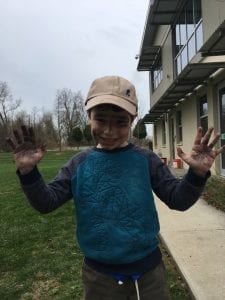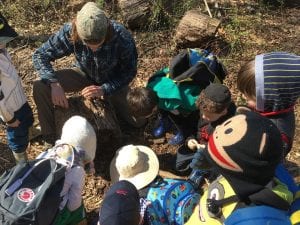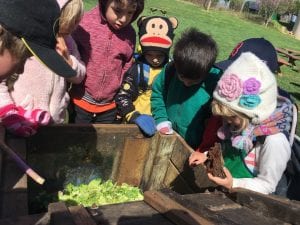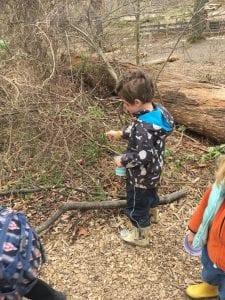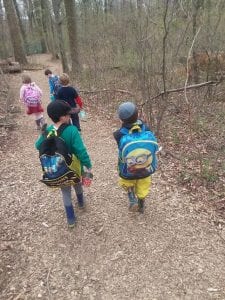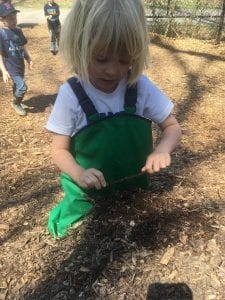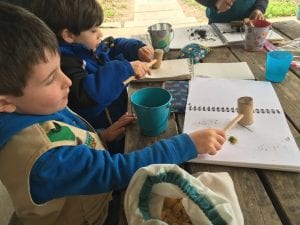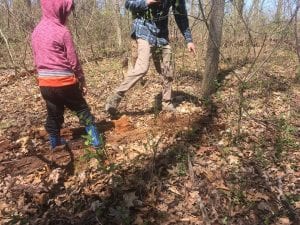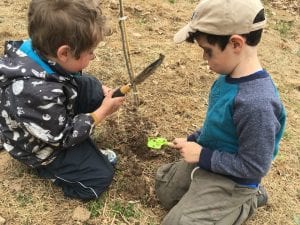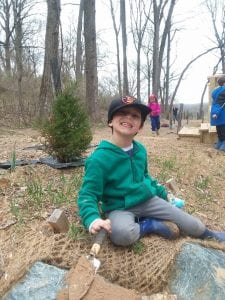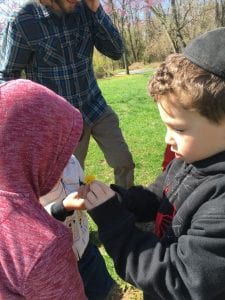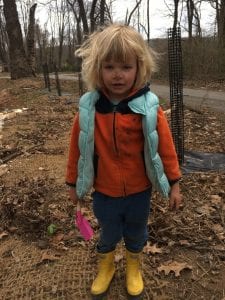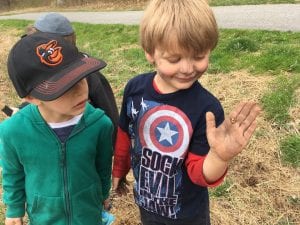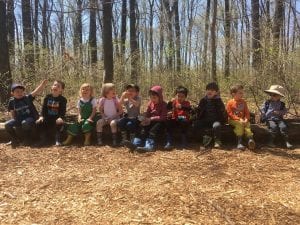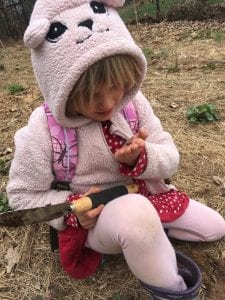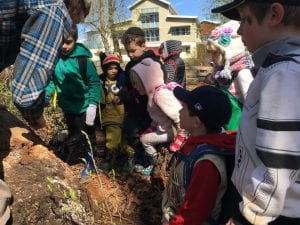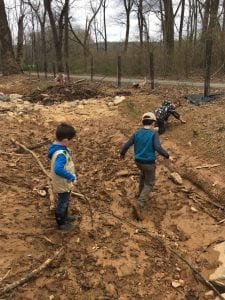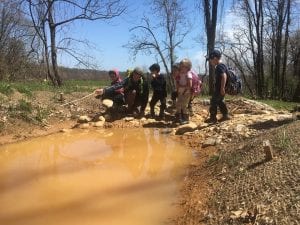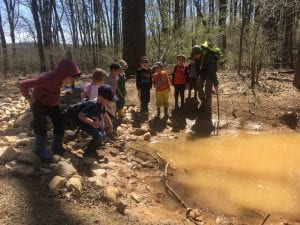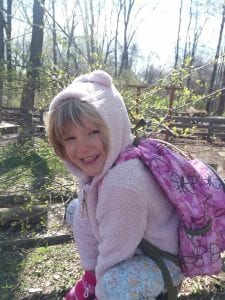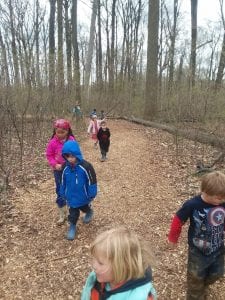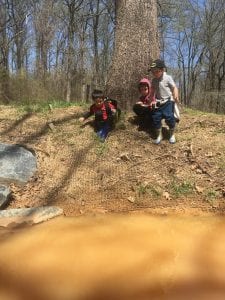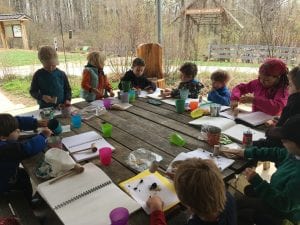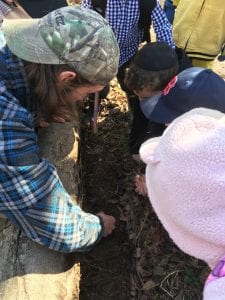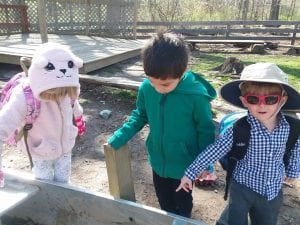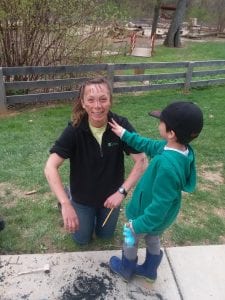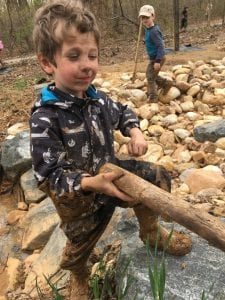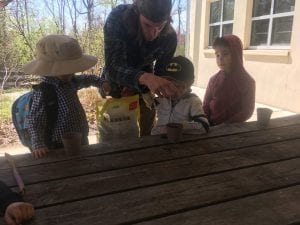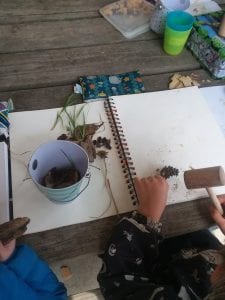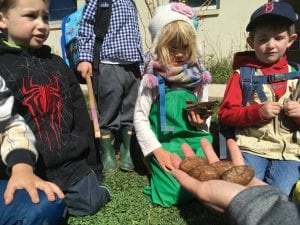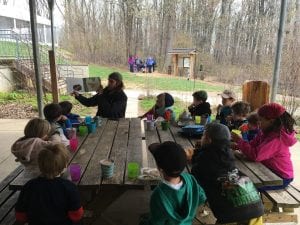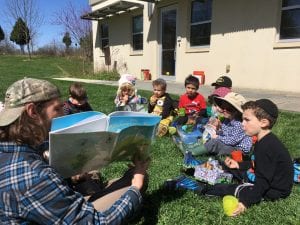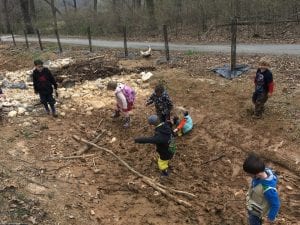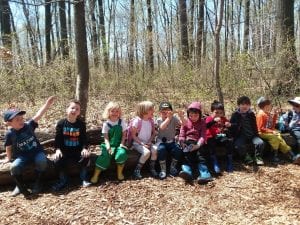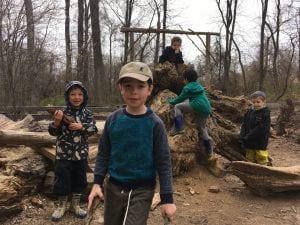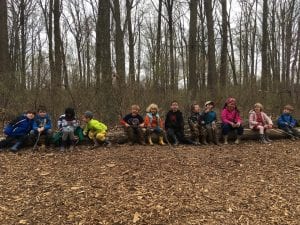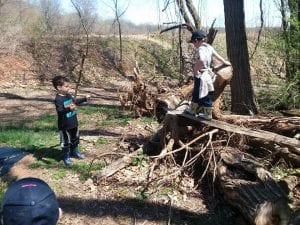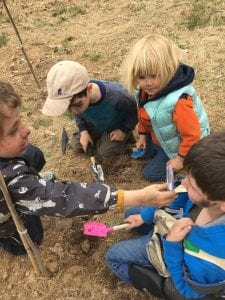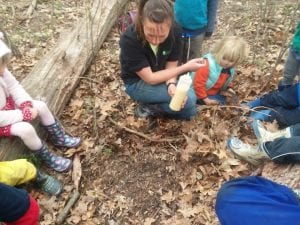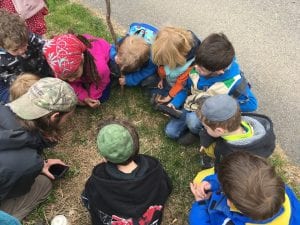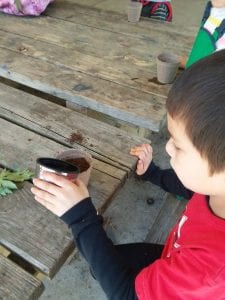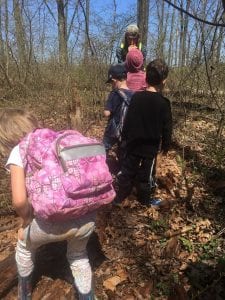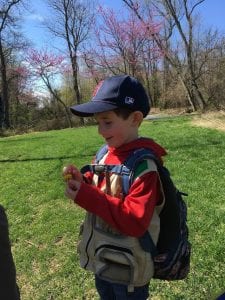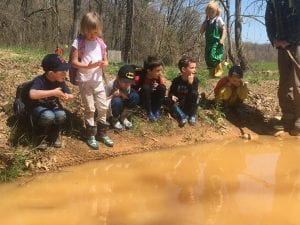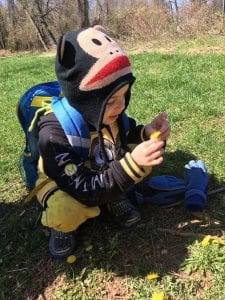In honor of Earth Day we dove into the dirt this week, learning about decomposers and the really rich soil they make.
We started by talking about decomposers, what they do, and what the forest would look like if all the decomposers disappeared. We started by focusing on one of our favorite decomposers: the worm. We read a story called Wiggling Worms at Work by Wendy Pfeffer, which had lots of fun facts about worms. We learned how they move and we were all surprised to find out that the ring we see on many worms is full of eggs. We were inspired by the worms decomposing, so we collected our own material and used mallets to break the material down and begin its decomposition. We experimented by smashing different materials into our journals and found that some things left prints on the paper while other things did not break into smaller pieces at all.
We went out on a hike to find worms and decided the best places to look would be under logs and in moist places. We used shovels to dig in the soil and we founds tons of worms. We also used water with mustard powder in it to find worms under the surface. The mustard irritates the worms and so they come to the surface to escape it. Using the mustard water is a great way to figure out exactly how many worms are living under the surface in certain areas.
Log rolls are another way to find decomposers. We learned that to roll a log, we should gently roll it towards us. Then we can look underneath to find all the decomposers and when we are finished we should gently roll the log back over the creatures to restore their home. We found salamanders, beetles, termites, worms, fungus, and more! We took handfuls of the decomposing logs and filled our noses with the smell of fresh soil. We also stopped by the compost to see what decomposers can break down in a compost pile. We learned that rich soil is very important for plants to grow, especially edible plants in our gardens.
Thinking about edible plants, we realized that there are tons of wild edibles we can try. However, when eating wild plants we promised to be 100% sure before we put anything in our mouths. With the help of Mr. Travis, we tried Dandelion, Violets, Mint, Lemonbalm, and Onion Grass. Then, we used soil from decomposers to plant our own edible flowers!
We read another story called On Meadowview Street by Henry Cole. In this story, a girl makes a flower preserve in her yard and slowly it turns into a meadow. This meadow is home to many different plants and animals. Soon the whole neighborhood turn their yards into meadows and the people, plants and animals all enjoy the land together. We all decided that it would be super fun to turn our yards into meadows too!
Mon/Wed:
- Bird on the Bird Box!
- Blazing our own Trail
- Cockroach Giving Birth!
- Dancing Down the Trail
- Decomposers?
- Digging for Worms in the Mulch Pile
- Digging for Worms
- Digging in the Mud
- Eating a Wild Edible
- Eating Dandelion
- Filling up her Bucket!
- Found a Worm
- Happily Digging
- Hiking
- Journal Time
- Journaling with a Dandelion
- Labelling her Journal
- Lemon Balm and Mint Sandwich
- Looking at Frogs
- Looking for Decomposers
- Looking for the MayApple Apples
- Looking for Worms under the Log
- Mud Painting
- Nest in the Nest Box
- Our Queen
- Our Seed Pots
- Planting!
- Ponds and Rivers in the Outdoor Classroom
- SeeSaw Planks with a Puddle!
- Storytime
- Surprise Snake Visit!
- Taking Care of his Worm
- The Gang
- The King-Prince
- The Rockstar Queen
- Using Mustard Water
- Using the Water Wheel
- Waiting for Worms
- We Heard a Frog!!!
- What Plants Work Best?
- Worm Apartment!
- Worm on the Shovel!
- Worms in the Mulch Pile!
Tues/Thurs:
- Another Frog!
- Balancing Forest Dreamers
- Banana Peel Race
- Charcoal Dust
- Charcoal Paint
- Checking for Decomposers
- Checking Out the Compost
- Collecting Material to Decompose
- Collecting Material
- Decomposers in the Mulch Pile
- Decomposing in Journal
- Decomposing Log!
- Digging for Worms
- Digging in the Mud
- Eating Dandelion
- Forest Dreamer Ready to Dig!
- Forest Dreamer with a Decomposer
- Forest Dreamers!
- Found a Worm
- Found Decomposers
- Found the Mud!
- Frog!
- Frogs Everywhere
- Happy Frog!
- Hiking
- How Close Can we get to the Frog?
- Journal Time!
- Log Rolls
- Look! Somethings in the Canoe!
- Ms. Tara gets Face Paint
- Muddy Forest Dreamer
- Planting Seeds
- Smashing Charcoal
- Smashing Things into Our Journals
- Snake Eggs!!!
- Story About Worms
- Storytime!
- The Gang in the Mud
- The Gang on a Decomposing Log
- The Gang on their MinionMobile
- The Gang!
- The Hideout
- Using the Magnifying Glass
- Waiting for Worms after Applying Mustard Water
- Waiting for Worms under the Grass
- Watering our Seeds
- What Does it Smell Like?
- Wild Edible
- Will the Frog Come Back?
- Yummmm
